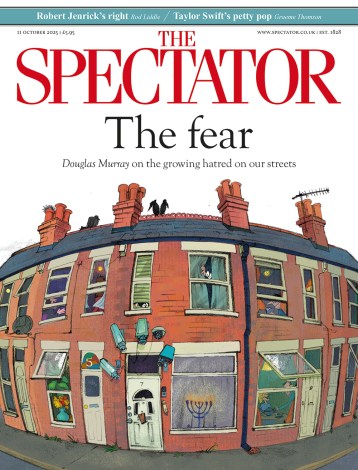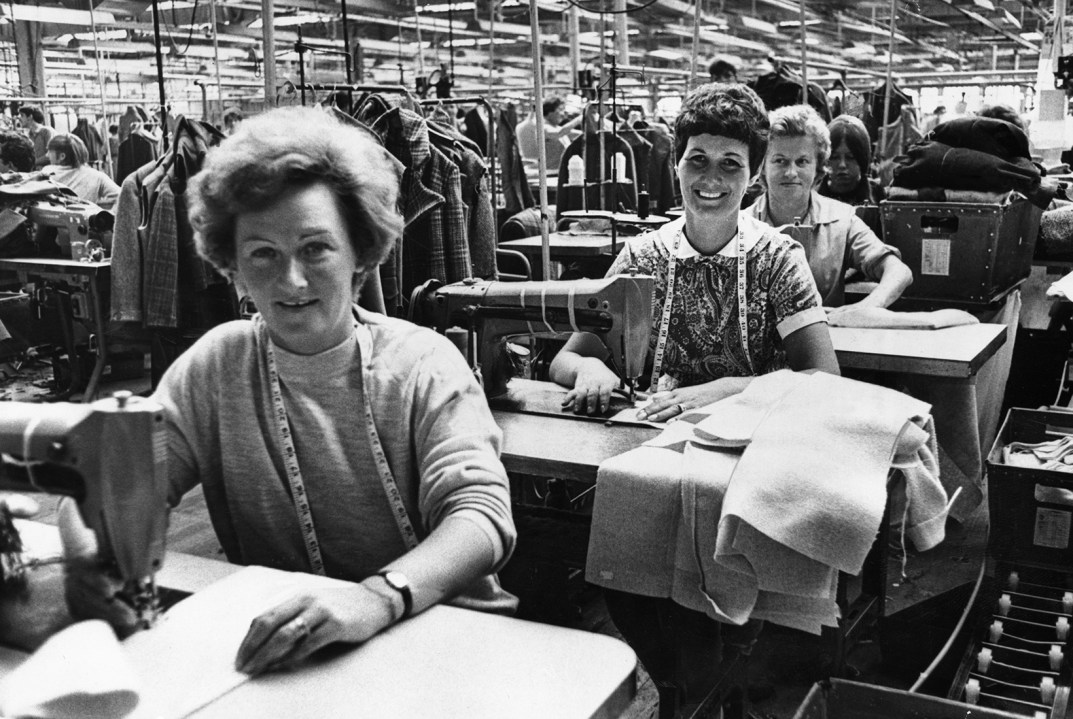The phrase ‘working mother’ ought to be as redundant sounding as ‘working father’ would be if anyone ever said that: in the UK three-quarters of women with dependent children work. Yet the working mother still feels provisional, something that lockdown has made sharply apparent to many women. Will it be Mum or Dad who claims the spare room, while the loser retreats to the kitchen table? Mum or Dad who does the home-schooling? Who will preserve their professional status, and who will slide into the domestic? The answer is that, in most cases, the woman loses, and her male partner quietly gathers the spoils.
Although the ability to do our jobs from our homes seems like a splendidly modern thing that could never have happened before broadband, it actually signals a return to an older style of working for women. Where child care responsibilities made going into a factory impossible, Helen McCarthy explains, working-class women in the late 19th and early 20th centuries often took on what was called ‘home work’: assembling boxes of artificial flowers or strips of hook-and-eye fastenings, all paid by the piece and all possible to do with children around.

For socially minded onlookers, this kind of ‘sweated labour’ was a subject of much horror: in 1906, the Sweated Industries Exhibition in London made a human zoo of these workers, so visitors could thrill to the depravity of it all. The concerns about this kind of employment are echoed by contemporary debates about the gig economy, and there was undoubtedly exploitation. But there was also freedom for women in being able to make their own money. ‘A shilling of your own is worth two that he gives you,’ said one working mother in a survey of 1909.
And this freedom was itself a source of anxiety. Discussions of the working mother distinguished between ‘justified and unjustified wage earning’: the former was a regrettable necessity for women afflicted with husbands unable to fulfil their bread-winning duties, but the latter was something close to monstrous. A woman who worked for material comforts above subsistence, or because the social life of the factory was preferable to being stuck in the home, was betraying her natural affinity for the domestic, and stealing work from men. Working mothers were blamed for infant mortality (though the cause most often was poor sanitation).
State creches, which we’re now assured are impossible, proved quite possible in a national crisis
The two world wars, however, forced a change in the rhetoric — and the policy — around working mothers. With women needed to take on the jobs left over by men entering the forces, the working mother was not merely tolerated but encouraged, through the establishment of state creches. After each war, these were rescinded, as the priority was once again given to male employment. Learning that they ever existed is hardly less astonishing than learning that Britain was once, briefly, a province of Sweden. A thing we are now assured is impossible proved nonetheless quite possible in a national crisis.
Post-war, the welfare state was designed to reinforce the ideal of the nuclear family headed by a male wage-earner. In 1945, William Beveridge told a housewife that she had ‘the most important job in the country, because if you didn’t look after us and feed us, how could we men get on with our jobs’. It was, if nothing else, an admirably honest account of the economics of unpaid labour, where women must be kept in wageless dependency to support the productivity of men. But the system he devised also created vast employment opportunities for women in the comfortably feminine caring professions of nursing and education.
In the mid 20th century, women’s employment began to be framed as a right rather than a need, and even the mass guilt trip of attachment theory couldn’t tear women away from the joys of economic independence. It helped that full male employment left no question of women ‘taking’ jobs that were rightfully men’s. There was a catch, though: while mothers changed, fathers didn’t, and the burden of housework continued to be borne by women (it still is). Managing this, explains McCarthy, was framed as a matter of women’s individual ingenuity, rather than one of collective social reform. The working mother was still a problem, but she was her own to solve.
McCarthy assembles an inestimable quantity of detail here. This is an important book. It is also a boring book. ‘It is not the historian’s job to reveal essential truths about women’s desires, past or present,’ she writes in the conclusion, ‘or to generalise about paid work as either “good” or “bad”.’ This simply means that the book lacks an honestly articulated argument (it would be perverse to maintain that such a history takes paid work as anything other than a good overall). All the same, Double Lives is a forceful reminder that attitudes to working mothers change abruptly and that politics, not nature, will decide the future of female employment.







Comments